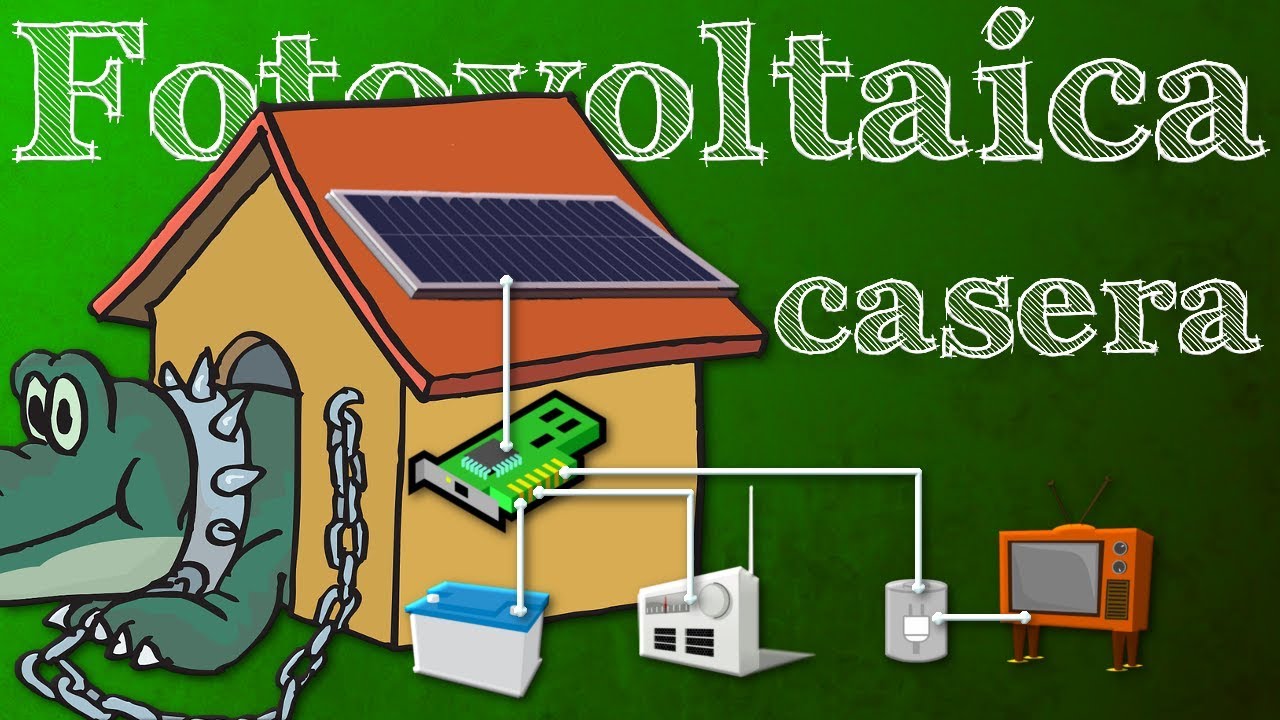IPA - Energi Terbarukan dan Tak Terbarukan | GIA Academy
Summary
TLDREn este video, exploramos las fuentes de energía renovable y no renovable disponibles en la Tierra. Las energías renovables incluyen el sol, el viento, el agua, el calor terrestre y la biomasa, que son fuentes inagotables y pueden ser convertidas en electricidad mediante diversas tecnologías como paneles solares, turbinas eólicas y plantas geotérmicas. Por otro lado, las fuentes de energía no renovable, como los combustibles fósiles y la energía nuclear, se agotan con el tiempo y pueden causar daños al medio ambiente. Este video proporciona una visión general de cómo estas fuentes de energía contribuyen a la generación de electricidad, destacando sus ventajas y desventajas.
Takeaways
- 😀 La semilla de girasol es una fuente de energía alternativa y se puede utilizar para producir biodiesel y biogás.
- 😀 Las fuentes de energía se dividen en renovables y no renovables. Las renovables se reponen rápidamente, mientras que las no renovables tardan millones de años en formarse.
- 😀 Las energías renovables incluyen el sol, el viento, la biomasa, el agua y el calor geotérmico.
- 😀 La energía solar se genera mediante reacciones nucleares de fusión en el sol y se puede convertir en electricidad mediante paneles solares o colectores solares.
- 😀 La energía eólica utiliza la fuerza del viento para generar electricidad a través de turbinas eólicas.
- 😀 La energía hidroeléctrica aprovecha el flujo de agua en ríos y presas para generar electricidad mediante turbinas.
- 😀 La energía geotérmica se obtiene del calor interno de la Tierra y se utiliza para generar electricidad mediante el uso de vapor y agua caliente.
- 😀 La biomasa es un recurso renovable que se puede convertir en energía mediante la quema de materiales orgánicos o la producción de biogás.
- 😀 Las fuentes de energía no renovables incluyen los combustibles fósiles (petróleo, gas natural y carbón) y la energía nuclear.
- 😀 La energía nuclear se genera a través de reacciones de fisión o fusión nuclear, y aunque produce gran cantidad de energía, tiene riesgos asociados como la contaminación radiactiva y accidentes en plantas nucleares.
Q & A
¿Qué es la energía renovable?
-La energía renovable es aquella que proviene de fuentes naturales que se regeneran rápidamente, como el sol, el viento, el agua, la biomasa y la energía geotérmica. Estas fuentes son sostenibles y no se agotan con el uso.
¿Cuáles son las principales fuentes de energía renovable mencionadas en el video?
-Las principales fuentes de energía renovable mencionadas en el video son la energía solar, eólica, hidráulica, geotérmica y biomasa.
¿Cómo se genera la energía solar?
-La energía solar se genera mediante reacciones de fusión nuclear en el sol, que convierten hidrógeno en helio. Esta energía se puede convertir en electricidad a través de paneles solares o en energía térmica mediante colectores solares.
¿Qué es la biomasa y cómo se utiliza como fuente de energía?
-La biomasa es material orgánico proveniente de seres vivos, como plantas o residuos animales, que se utiliza para generar calor o electricidad. Puede transformarse en biocombustibles como etanol o biodiesel o utilizarse directamente como materia prima para la generación de energía.
¿En qué consiste la energía eólica?
-La energía eólica se genera aprovechando el movimiento del viento, que hace girar las aspas de un aerogenerador (turbina eólica). Este movimiento se convierte en energía cinética y luego en electricidad.
¿Qué es la energía geotérmica y cómo se obtiene?
-La energía geotérmica proviene del calor interno de la Tierra. Se obtiene aprovechando el calor del magma y el agua caliente subterránea para generar vapor, que a su vez mueve una turbina para producir electricidad.
¿Cómo se utiliza el agua como fuente de energía?
-El agua se utiliza en las plantas hidroeléctricas, donde el flujo de agua de un río o embalse mueve turbinas, generando energía mecánica que se convierte en electricidad.
¿Cuáles son las principales ventajas de las fuentes de energía renovable?
-Las fuentes de energía renovable son sostenibles, no contaminan el medio ambiente y están disponibles de manera continua. Además, no generan emisiones de gases de efecto invernadero, a diferencia de las fuentes de energía no renovable.
¿Qué es la energía nuclear y cuáles son sus ventajas y desventajas?
-La energía nuclear se genera a través de reacciones nucleares, como la fisión nuclear, que liberan grandes cantidades de energía. Sus ventajas incluyen la producción de gran cantidad de energía sin generar CO2, pero presenta riesgos asociados a la seguridad y la gestión de residuos radiactivos.
¿Por qué es importante el uso de energías renovables?
-El uso de energías renovables es fundamental para reducir la dependencia de los combustibles fósiles, disminuir las emisiones de CO2 y mitigar los efectos del cambio climático. Además, contribuye a la sostenibilidad energética a largo plazo.
Outlines

Esta sección está disponible solo para usuarios con suscripción. Por favor, mejora tu plan para acceder a esta parte.
Mejorar ahoraMindmap

Esta sección está disponible solo para usuarios con suscripción. Por favor, mejora tu plan para acceder a esta parte.
Mejorar ahoraKeywords

Esta sección está disponible solo para usuarios con suscripción. Por favor, mejora tu plan para acceder a esta parte.
Mejorar ahoraHighlights

Esta sección está disponible solo para usuarios con suscripción. Por favor, mejora tu plan para acceder a esta parte.
Mejorar ahoraTranscripts

Esta sección está disponible solo para usuarios con suscripción. Por favor, mejora tu plan para acceder a esta parte.
Mejorar ahoraVer Más Videos Relacionados

Energía geotérmica | Qué es, cómo funciona, usos y ventajas

ENERGÍA HIDRÁULICA💧 ¿Es renovable? ¿Cómo funciona?

Energía eólica e hidráulica - Meteorología con José Miguel Viñas - Órbita Laika | La2

¿Qué es matriz energética nacional? | Hablemos de Chile

Energías contaminantes

Introducción a las energías renovables - ¿qué son las energías renovables?

Placas SOLARES : todo lo que necesitas saber
5.0 / 5 (0 votes)